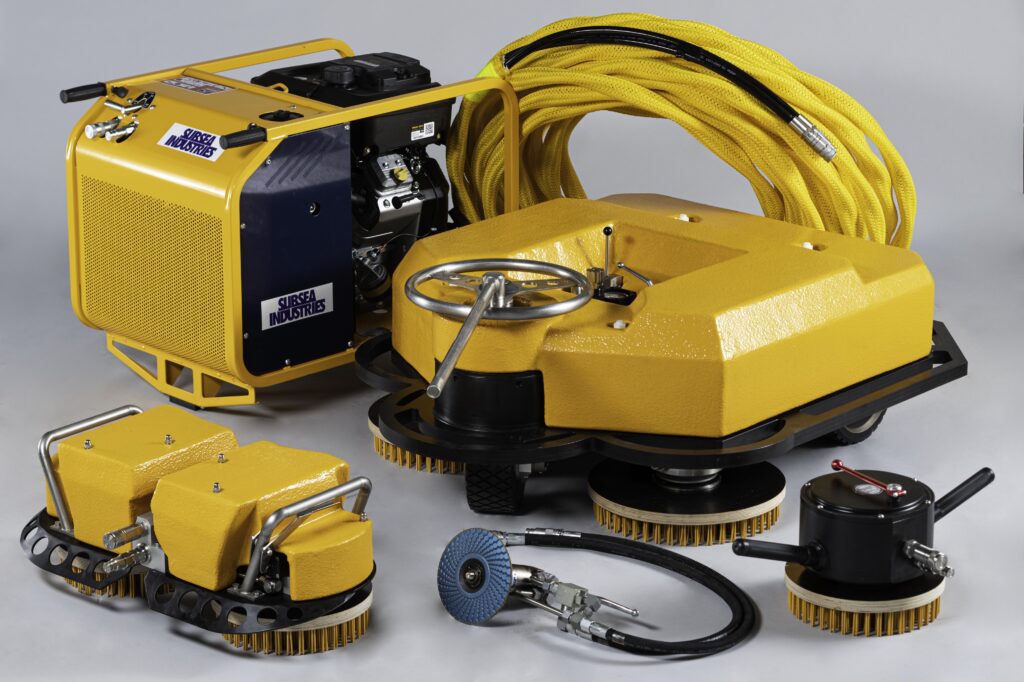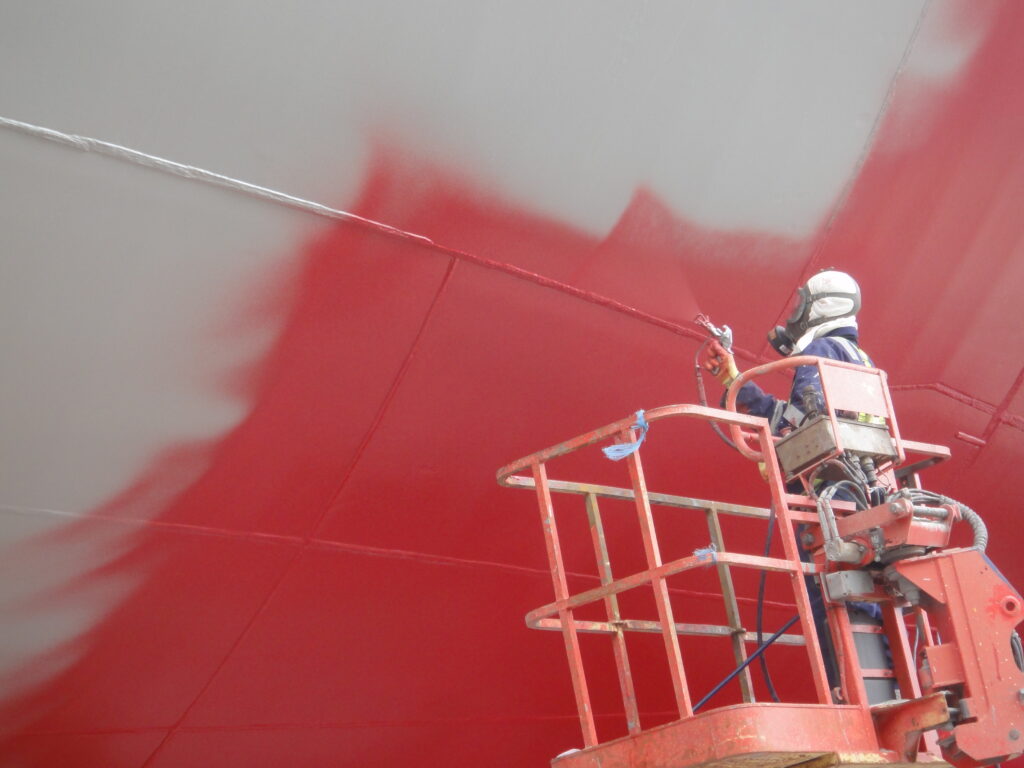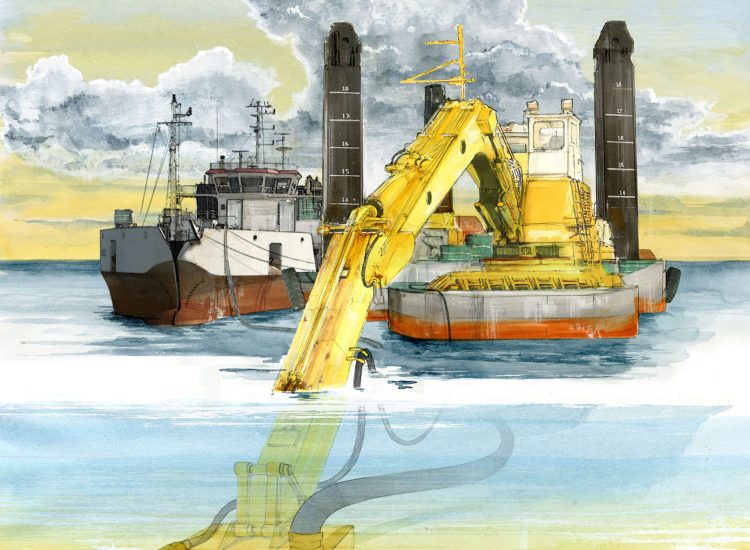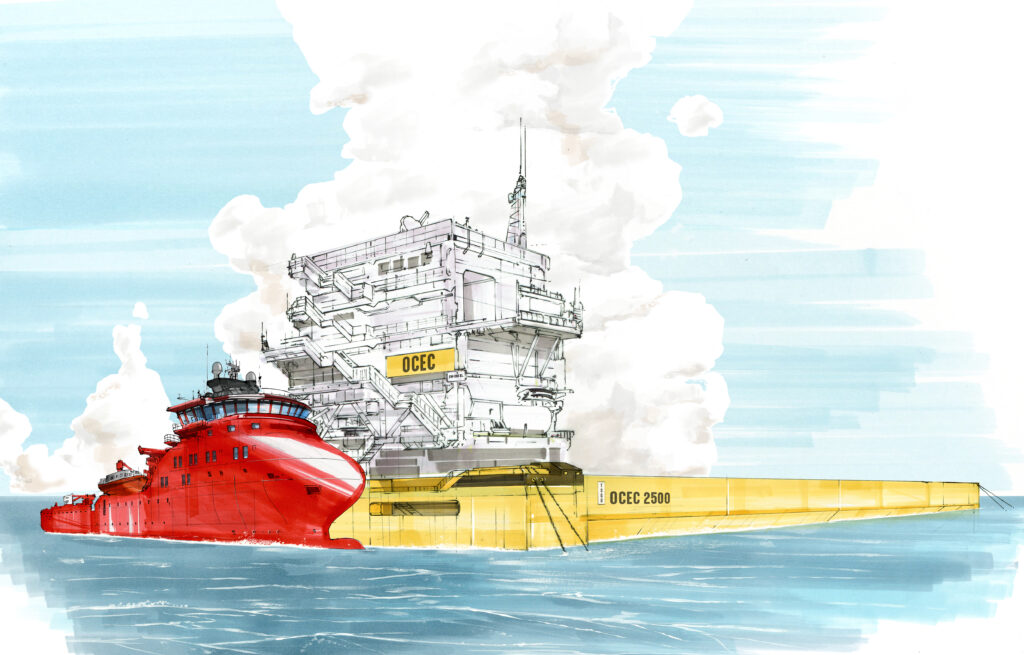Projects
Since Hydrex was founded 50 years ago by Boud, the company has always been on the forefront of innovation.
The purpose has been to develop and increase expertise in water, with the overall goal of clean rivers, seas and oceans.
The numerous patents filed over these years by Boud tell the tale.
Much has been accomplished. A great deal more is yet to come. On this page you can find a small selection of technologies developed by Boud and his team, as well as some future projects.

Underwater cleaning equipment
Launched in 1984, the range of Typhoon cleaning machines sold by Subsea Industries is available for applications from propellers on small pleasure boats up to the hulls of 400 meter container ships or large offshore platforms.
All types of fouling can be removed very effectively: light slime as well as very thick layers of heavy marine growth.
The cleaning units can be used effortlessly and safely for extended periods of time. They are easy to maneuver and will help clean all niche areas.
All the equipment was developed and designed in-house by Boud and Subsea Industries engineers based on the real-world cleaningexperience of divers. It is equipment designed by divers for divers and proven in action.
Flexible mobdock technology
Hydrex is able to perform a wide variety of operations with its flexible mobdocks. Mobdock is short for Mobile Mini Drydock. These enable the company to create a dry environment underwater for divers to work in. Hydrex introduced the technology in 2002 and it has been further developed and refined by the in-house R&D department over the years.
There is no need to send the vessel to drydock as all operations can be carried out alongside or at anchorage.
The most common type of mobdock operations are seal and thruster repairs or replacements.


Non-toxic marine coating systems
In 1993 research began on developing a new, long-lasting, non-toxic method of protecting ship hulls. Three years after the final development of Ecospeed, the system was launched commercially in 2002.
Several other coatings followed, each designed to solve a specific problem.
More information on these coating systems can be found on Subsea Industries’ website www.subind.net/coatings
Contained Dredging System (CDS)
The main problem with current dredging techniques is that they create a significant amount of turbidity.
Turbidity is the amount of silt suspended in the water column. As most waterways and ports are highly polluted, these dredging operations spread these contaminated substances, having a negative effect on the fauna and flora in the marine environment.
Boud developed the Contained Dredging System (CDS), which is a device for removing alluvial deposits from the bed of a body of water efficiently and without risk of spreading the pollutants present in contaminated silt, as it does not create any turbidity.
The CDS can also be used for routine dredging of rivers and ports to maintain their depth.
A video of the CDS can be found on the media page of this website.


Industrial cleaning system
Since Ecospeed was originally developed and released, Boud has been working on efficient, industrial methods of cleaning ship and boat hulls so that such cleaning can be done on a large scale on the largest ships and fleets without the limitations imposed by divers or ROVs doing the cleaning.
Development of such a system is well under way.
Hydrokinetic and wave energy
Boud is developing two novel energy generation technolgies with the goal of harnessing clean and affordable electricity from the available energy in water.
The first is designed to generate electricity out of moving water such as rivers, tidal zones and ocean currents; the other is designed to convert wave energy into electricity.
Both inventions solve the challenges the current energy systems are dealing with, showing they have a high potential to provide electricity for communities from small villages to large cities.


Solution for the cleanup of dumped chemical ammunition on the seabed
Ammunition dumps in the ocean that originate from the First and Second World Wars, include chemical munitions. These dumps are decaying due to the time spent in the hostile environment of the ocean. The harmful chemicals present in the shells can leak into the ocean and damage the environment.
After investigation of the current situation of dumped ammunition on the seabed, including the danger to public safety and the marine environment, Boud worked with advanced engineering students from TU Delft to develop a technology to safely deal with the problem and clean up the ammunition.
If you are interested in the technologies described on this page, or any other research related to the environment, water or sustainability, please fill in the contact form below.
